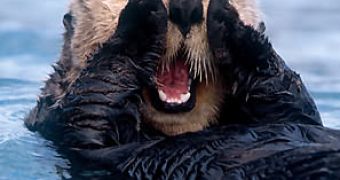A team of scientists led by specialists at the University of California, Santa Cruz has recently found that hungry sea otters are not just annoyingly cute whenever they munch on crabs and whatnot, but also a crucial factor as far as helping damaged seagrass beds recover goes.
Researchers say that, despite having been affected by a series of algae blooms, sea beds in California's Elkhorn Slough estuary are now recovering.
Apparently, this is due to the fact that otters moved back in this region back in 1984, and have been inhabiting these waters ever since.
In a paper published in yesterday's issue of the journal Proceedings of the National Academy of Sciences, specialists explain that sea beds growing close to coastlines get damaged whenever loads of nutrients make their way into their environment.
These nutrients trigger so-called algae blooms, which basically means that the waters become overpopulated with algae.
The result is that seagrass beds stop getting as much sunlight as they need, and start to decline.
Although they don't eat algae, sea otters make life easier for creatures that do have a sweet tooth for these marine plants.
Thus, they feast on crabs and more often than not cause a dramatic drop in their population.
With fewer crabs lurking around, sea slugs and other similar invertebrates can go about their business unhindered, meaning that they chomp loads of algae and clean up the seagrass beds.
“The seagrass is really green and thriving where there are lots of sea otters, even compared to seagrass in more pristine systems without excess nutrients,” specialist Brent Hughes commented on his and his fellow researchers' findings.
“This provides us with another example of how the strong interactions exerted by sea otters on their invertebrate prey can have cascading effects, leading to unexpected but profound changes at the base of the food web,” he went on to say.

 14 DAY TRIAL //
14 DAY TRIAL //